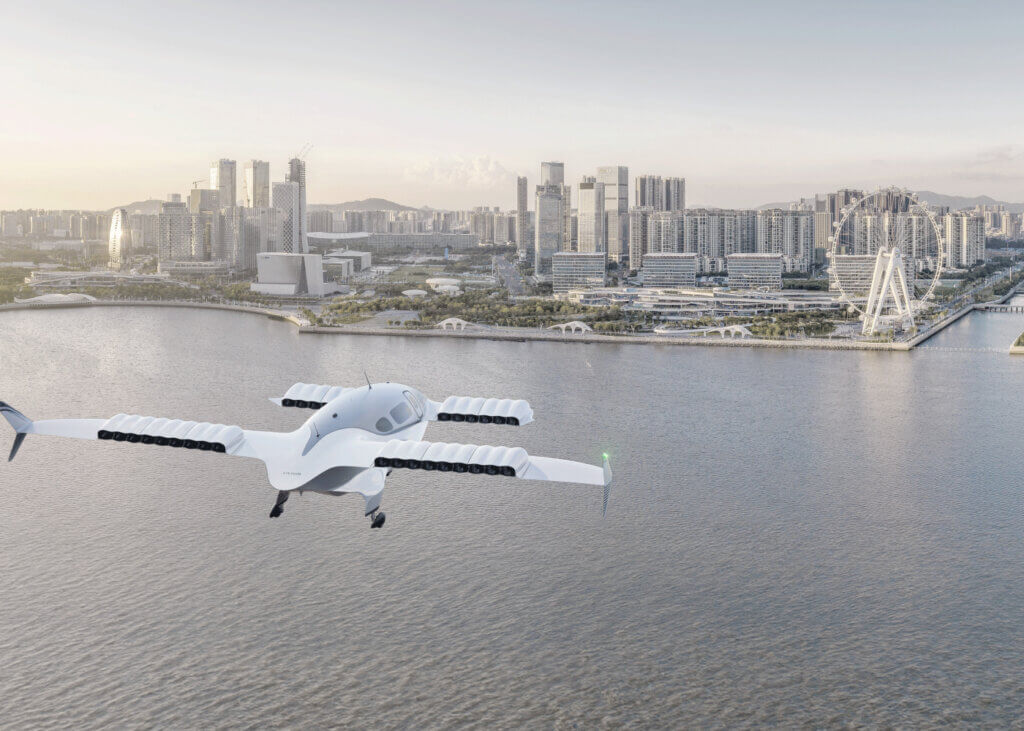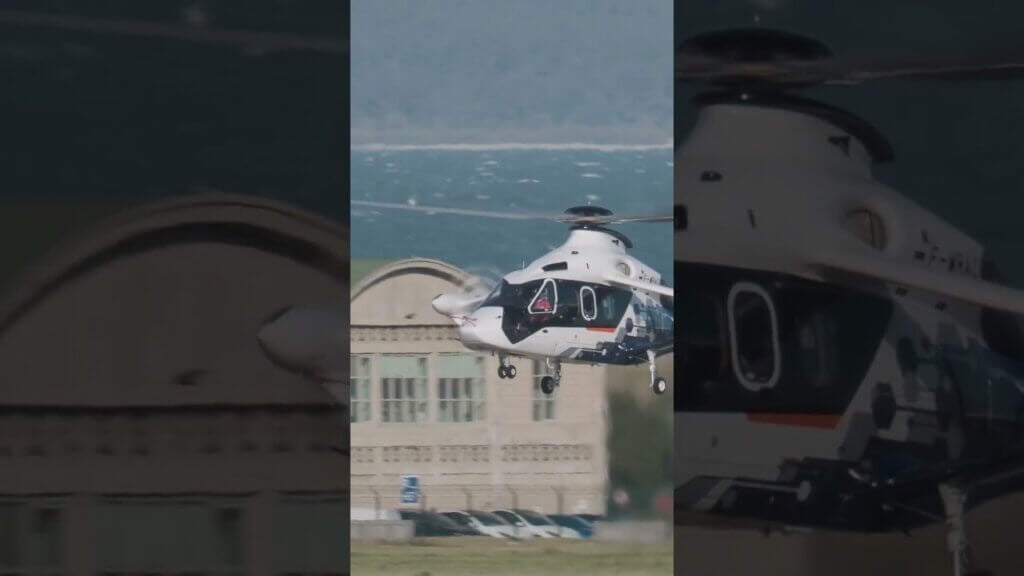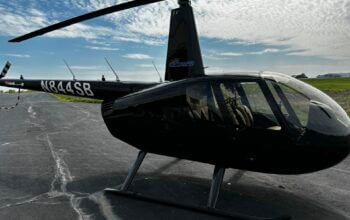Just a few years ago, eVTOLs were at the fringe of the more established aerospace community. But the involvement of industry giants, such as Honeywell and many others, is changing that. It is testament to the ever-increasing confidence that some, if not all, of these novel aircraft will manage to exploit an untapped market with their new capabilities.
Vertical spoke to David Shilliday, vice president and general manager for advanced air mobility (AAM) at Honeywell, to see how this legacy organization is adapting to this new reality in aviation.

This interview has been edited for length and clarity.
Alex Scerri: David, can you explain your role within Honeywell and the path that lead you here?
Dave Shilliday: I lead our AAM business unit that we created about three years ago specifically to serve this nascent market. We established a completely different way of working such that our business and technical offerings, as well as our contract engagement, would all be done at a pace and level of support that the AAM market needs right now.
The way we do business with legacy aerospace original equipment manufacturers [OEMs] cannot be the same way that we work with this group of customers. Here, we are more agile and look for offerings that perhaps we have never developed before, but also reach into the Honeywell portfolio for avionics, fly-by-wire, electric motors, etc., and tailor these for AAM.
Prior to leading the AAM unit, I held a number of roles in aerospace where I worked in Honeywell’s European offices managing airline customers for many years. Before joining Honeywell, I was in the automotive market, which is an interesting entry point for AAM because a lot of these airframers are looking to automotive on how to scale to high production rates.
Alex Scerri: Honeywell appears to be putting significant resources behind urban air mobility (UAM). When did the company understand that AAM and eVTOL aircraft would be a significant part of the aviation ecosystem?
Dave Shilliday: There were maybe two theses why this made sense for us. Firstly, we believed that with the confluence of distributed electric propulsion, battery technology, and vehicle design — all reaching a unique spot in history — it could be disruptive to not just how we fly but more broadly, how we move people and cargo. We also believed it would become a sandbox on how to develop future technologies that could also end up flying in future air transport, business jet, or defense applications. We were bullish on both fronts in that we believe this industry can and will be successful and thatit will also rapidly advance technologies for other areas of aerospace. That brought about the creation of this unit in 2020.
Alex Scerri: Can you briefly describe the areas where Honeywell is developing technologies specifically for UAM in avionics, propulsion, and radar technology?
Dave Shilliday: We like to say that while we don’t make the vehicle, we make its brain, eyes, ears, heart, and lungs. There is everything from the avionics solution, radar — specifically the IntuVue RDR-84K band radar system for detect and avoid [DAA] — fly-by-wire control systems, the actuators that drive the effectors, the electric propulsion unit that moves the vehicle, and the cooling systems to keep passengers comfortable and cool the batteries. For those vehicles that may start out with a hybrid-electric concept or even have it as a long-term solution, we offer a range of turbogenerators [TG]. Most of these are based on our experience and technologies used in legacy aerospace.

Alex Scerri: Is Honeywell part of any standards development organization (SDO) committees relating to UAM?
Dave Shilliday: Yes, we are active on several different work streams. We try to be a repository for where the rulemaking sits. This means we are trying to help and guide the rulemaking process where our inputs are appropriate or needed. We also regularly publish a view of where the European Union Aviation Safety Agency [EASA], the Federal Aviation Administration [FAA], and others currently stand relative to vehicle certification [and] operational and air traffic management [ATM] rules, so that our current and future customers can stay up to speed with the relevant state-of-the-art regulations.
Alex Scerri: Can you give us any details of eVTOL airframers that are planning to use Honeywell products?
Dave Shilliday: We provide Lilium with the Anthem integrated flight deck, as well as the flight control computers, electric propulsion and, just recently, we have announced that we will also be providing the cooling systems for that aircraft. Archer will be using our actuation systems, which are extensive on that aircraft due to the tiltrotor solution and our thermal management system. At Vertical Aerospace, we will supply both the Anthem flight deck and the flight control computers. We’re also working with Pipistrel, Supernal, and several other publicly announced and not yet public customers. It is really a nice cross section of our product range that we have across a wide spectrum of OEMs, with differing vehicle designs.
Alex Scerri: How will the Honeywell Anthem flight deck contribute to simplified vehicle operations (SVO)?
Dave Shilliday: Our Anthem flight deck is designed to be future-proof in many different ways. As features are developed that move through the certification process, these elements of SVO can be added seamlessly into our architecture. I am speaking at high level here, as currently, there is no broad agreement on what constitutes a feature of SVO, but suffice it to say, the features we’re working on will make a pilot’s job easier and the aircraft safer. We could all think of countless features that meet this definition, but the key point is that the flight deck needs to be adaptive as these features are developed and certified.
Alex Scerri: You have two turbogenerator products for AAM, including a one-megawatt (MW) version. Do you have a pathway to certify these under, for example, EASA’s new Special Condition SC E-19, or are you looking for a more traditional certification route?
Dave Shilliday: That will depend on the launch aircraft and the mission. There is not too much I can say about that, except that the first aircraft to use our TG solution may drive our decision on at least the initial certification. Long term, it will probably include both paths you mentioned.
Alex Scerri: What is Honeywell’s view on sustainable aviation fuel (SAF) being a step toward decarbonization in aviation?
Dave Shilliday: We agree 100%. All our APUs [auxiliary power units] are currently certified to operate on 50% SAF, and we have tested nearly all our APUs, including the HGT1700 currently flown on every Airbus A350 XWB, on 100% SAF with no issues. So definitely, the AAM TG solutions we are designing will be able to operate on 100% SAF from the first mission.
Alex Scerri: The other solution in your portfolio is the hydrogen fuel cell. EASA, for example, has specifically excluded this type of power source from its certification documentation. As a system manufacturer, how do you manage this lack of guidance?
Dave Shilliday: We, with our current and future customers, need to prove that there is a compelling need for a hydrogen fuel cell solution. That will drive the regulators toward more rapid rulemaking. AAM is so exciting and generating so much discussion around how transformative it can be that we have seen the rulemaking go much faster, though it is still not as fast as we would like. I think that with AAM, and all the new technologies needed for it compared to traditional aviation, the regulators have a lot on their plate.

Alex Scerri: Do you think fully electric aircraft, as opposed to hybrid, can do operationally practical missions from day one?
Dave Shilliday: I believe so. I think there are several missions that even with existing battery technology you can operate on an all-electric vehicle. We will see a number of vehicles launched initially as all-electric and be successful in the mission they want to operate. Some operators who will want to extend that mission may decide to redesign and introduce a hybrid-electric solution, but I think they will be the outliers. This reflects the battery technology today, not necessarily where battery technology will be when these vehicles will start operating at higher volumes.
Alex Scerri: Another subsystem that you mentioned is the cooling systems in the form of your micro vapor cycle systems (MVCS) used for cooling batteries and/or cabins. Can you give us some specifics?
Dave Shilliday: The easiest one to talk about is for the Lilium Jet where our system will be used to cool both the passenger cabin and batteries. In that case, Lilium will be using our bigger 20-kilowatt [KW] system. You could imagine that for a smaller vehicle or one where you are only cooling specific elements, the scope would be different, and you could go for a system half or a third of that size, which we also offer.
Alex Scerri: Can you give an overview of where the various sections related to AAM at Honeywell have their research and development (R&D) and production facilities?
Dave Shilliday: As far as research and production, our biggest center is here in Phoenix, Arizona. We have a dedicated AAM lab here in the offices where I am now. Here, we also work on our ground control station technology and SVO, as well as system integration of items like our compact fly-by-wire systems with actuation. We develop solutions for our actuation just down the road in our Tempe facility, so there is a lot going on here in Phoenix.
Honeywell also has a lot of AAM work going on in Brno, Czech Republic. A large swathe of the work that we are doing around the path to autonomy [and] the features that move toward SVO and reduced crew operations [RCO] get developed by our Brno team. That is another big center of excellence for us.
The third facility I would mention is in Bangalore, India, where a lot of our software development, whether it is controllers for those MVCS systems, controllers for our electric propulsion system, or software that goes into a number of these autonomy features, gets developed out of that office as well.
Alex Scerri: Is there anything you would like to share with the eVTOL community?
Dave Shilliday: I think that the progression of AAM, in so far as the technical work to get the vehicle to perform the vision of the mission, is very mature. The vehicle design is mature, the testing is mature, and the regulatory work is a high priority that everyone acknowledges. The certification landscape needs to be clearer and there is a big focus on that.
The two areas that I think are lagging are around infrastructure, whether it is about ensuring that dedicated vertiports are available on time or integrating vertiports into existing airport operations. We need more emphasis on that. Volocopter’s activities in 2024, or any other AAM commercial flights that should happen in 2024 and 2025, will really spur that on.
The other one that goes along with that is public acceptance. There needs to be a dramatically increased campaign around this. If you do this wrong and communities do not feel they understand all the benefits that will come with these solutions, you could get a very strong negative reaction even if we are confident the benefits are going to be extensive. You can open economies that are very challenged today, and those benefits are going to be far reaching. However, if you don’t tell that story early and often in the communities that are going to be impacted positively or negatively, you are not going to get the adoption you need.









